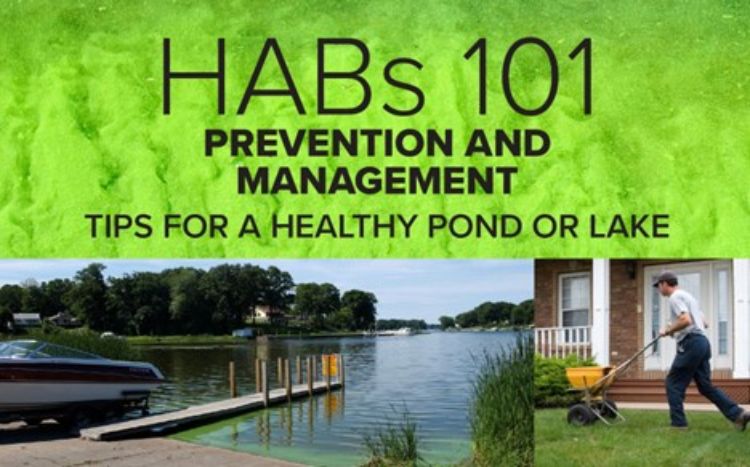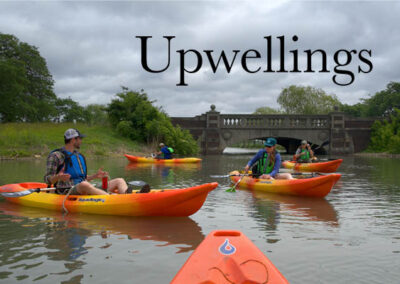Three online presentations cover topics including septic systems, nutrient budgets, direct management options of HABs, and more.
Note: Article updated with video links.
Erica Clites
If your lake turns green in the summer, you may be wondering about the cause and whether it’s an issue for the people using the lake. The color change of your lake may be caused by a bloom of algae: tiny, naturally occurring plants that become visible when adequate nutrients are present. The nutrient dynamics of a lake are complex with multiple nutrient sources potentially fueling algal blooms including precipitation, runoff and deposits in the sediment.
Reducing nutrients is key
Lakes can be classified based on their productivity and ability to support aquatic life. The highest amount of nutrients are found in eutrophic lakes. Eutrophic lakes may have repeated algal blooms due to the amount of nutrients present. Learning how to reduce the amount of nutrients entering the lake through human causes such as fertilizer use, and septic systems can help reduce the occurrence of algal blooms.

Reports of harmful algal blooms (blooms from algae that produce toxins) have been increasing in Michigan since 2013 and include both inland lakes as well as the Great Lakes.
Reports of harmful algal blooms (blooms from algae that produce toxins) have been increasing in Michigan since 2013 and include both inland lakes as well as the Great Lakes. Harmful algal blooms (HABs) can have a variety of health impacts for people including skin rashes, a runny nose or stomach pain and headaches. If you suspect that a HAB is present, do not allow pets or livestock to drink or swim in the water. Animals tend to swallow more water and so take in more toxins than people and can get seriously ill or die.
Watch and learn
Michigan Sea Grant and partners hosted a free HABs webinar this spring, with recordings now available on three topics. In video one, Erica Clites from Michigan Sea Grant and Sarah Scheitler from Michigan Department of Health and Human Services discuss HABs basics in Harmful Algal Blooms 101. In video two, Al Steinman from Grand Valley State University discusses the nutrient budget of a lake and how it relates to harmful algal blooms. In the final video, Marcella Domka from Tip of the Mitt Watershed Council discusses septic systems and their impacts on HABs. All of the videos are available online at the Michigan Sea Grant YouTube site.
More online
Want to dive deeper into HABs? Find a collection of resources on Michigan Sea Grant’s website.



